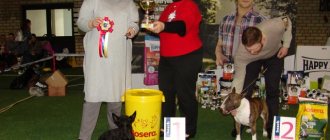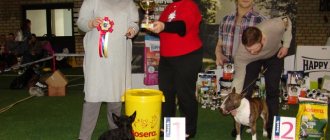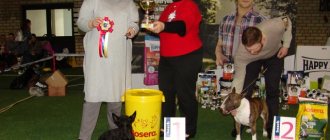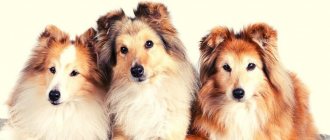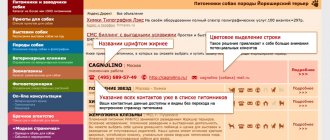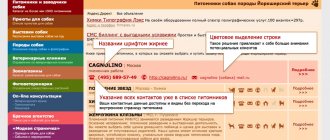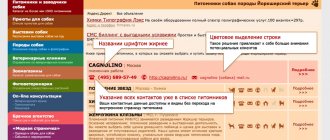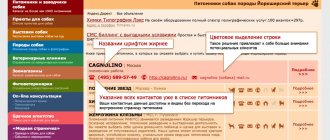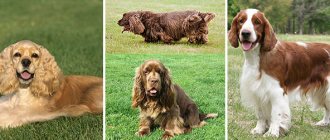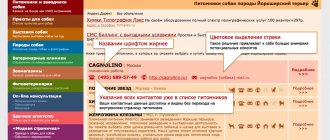* * * * * * * * * * * * * * *
At the National Saluki Specialty Show (Club Champion) on July 7, 2012 in Malakhovka under breed expert Niklas Eriksson (Qirmizi Saluki, Sweden), 30 Salukis were presented:
Azima Al Naqawa - exc1 in the National Club Champion class, CC, Reserve Best Bitch Aya Min Ayat Al Naqawa - exc2 in the National Club Champion class, CC Baqqam Al Naqawa - exc1 in the working class, CC, Best Male-5 => closed National Club Champion
Photo: E. Borzakovskaya, E. Paritchenko
At the Russian Coursing Championship in Sukhanovo (Moscow region) May 8, 2012:
Badaari-Badaari Al Naqawa - 1st among males - Champion of Russia in coursing Baqqam Al Naqawa - 4th among males Balasaan Al Naqawa - 1st among females - Champion of Russia in coursing (3rd year in a row!) Asheera Al Naqawa - 3rd among females
* * * * * * * * * * * * * * *
At the CAC show on March 31, 2012 in Rakvere (Estonia), expert Inga Siil (Estonia):
Azima Al Naqawa - BOS-1, CAC, BOB and BIG-1 - closed the Champion of Estonia and Baltics; Aya Min Ayat Al Naqawa - LS-3
* * * * * * * * * * * * * * *
At the CAC exhibition on February 18-19, 2012 in Valmiera (Latvia):
February 18 - Aya Min Ayat Al Naqawa - Best Man-1, CAC, BOB - finished Latvian Champion 19 February - Azima Al Naqawa - Best Man-2, CAC - finished Latvian Champion; Aya Min Ayat Al Naqawa - BOS-1, BOB and BIG-3
* * * * * * * * * * * * * * *
At the exhibition in memory of Sabaneev on January 28, 2012 in Moscow
IDAN ATIQ NASSIM (9.5 years) - Best Veteran - expert Frank Sabella (USA)
Photo: Al Nafiseh
* * * * * * * * * * * * * * *
At the exhibition on January 21-22, 2012 in Kaunas (Lithuania):
January 21 - Aya Min Ayat Al Naqawa - CAC, BOB and BIG-4 - Champion of Lithuania January 22 - Azima Al Naqawa - CAC, BOB and BIG-3 - Champion of Lithuania All results are here.
Photo: E. Karlova, Dog Show Travel, Vaida Dukauskienė
* * * * * * * * * * * * * * *
* * *
We are pleased to announce that our male BAQQAM AL NAQAWA will soon become the father of a C-litter in the Al Nafiseh kennel
Long-haired Saluki puppies are expected in all shades of grizzly. If you are interested in this litter, please contact us: Svetlana Panova, Marina Solovyova
| For more detailed information about the parents and the expected litter, see the nursery website: Saluki Al Nafiseh |
* * * * * * * * * * * * * * *
At the International Coursing in Mustiala (Finland) August 20, 2011
BAQQAM AL NAQAWA - 1st place out of 17 males - CACL and CACIL => Finnish coursing champion BADAARI-BADAARI AL NAQAWA - 2nd place out of 17 males - CACL and RCACIL
BALASAAN AL NAQAWA - 5th place out of 21 females Results and photos - here
Photo: Irene Vinha
* * * * * * * * * * * * * * *
At the EUROPEAN COURSING CHAMPIONSHIP July 17, 2011, Oirschot (Netherlands)
BALASAAN AL NAQAWA — 3rd place and ResCACIL out of 47 females! Well done, Bali! Congratulations to her owner Marina Solovyova!
BAQQAM AL NAQAWA — 17th out of 53 males BADAARI-BADAARI AL NAQAWA — 33rd out of 53 males Results and photos are here
Photo: N. Zeszutek
* * * * * * * * * * * * * * *
At the International coursing of the CACIL rank in Tampere (Finland) July 9, 2011 BIDHAARA AL NAQAWA - 1st of 24 females - CACL, CACIL and the title NORDIC LC WINNER-2011 My congratulations to her owner Irina Shenina! New results and photos of Zara - see her page
Photo: Jenni Peltokorpi
At the Finnish Saluki Club coursing in Finland July 2, 2011 BIDHAARA AL NAQAWA - 1st of 14 females - CACL and title FINNISH SALUKI CLUB LC WINNER-2011 My congratulations to her owner Irina Shenina! New results and photos of Zara - see her page
Photo: Tiia Pesonen
* * * * * * * * * * * * * * *
At the International Exhibition CACIB “Summer of Belarus-2011” and “Minsk-2011” on June 4-5, 2011 in Minsk June 4 - Azima Al Naqawa - CAC, CACIB, BOB and BIG-2 - Champion of Belarus June 5 - Aya min Ayat Al Naqawa — CAC, CACIB, BOS — Champion of Belarus All results are here
* * * * * * * * * * * * * * *
At the International coursing of the rank CACIL and Champion of the RKF in the village of Yastrebki, Moscow Region, May 21, 2011: Baqqam Al Naqawa - 1st place in males - CACIL and Champion of the RKF, Badaari-Badaari Al Naqawa - 2nd place in males - ResCACIL and CACL, Balasaan Al Naqawa - 2nd place for females - ResCACIL and CACL New results and photos from coursing - see HERE
* * * * * * * * * * * * * * *
At CACL coursing in Sukhanovo, Moscow region, May 8, 2011: Baqqam Al Naqawa - 1st place in males - CACL, Badaari-Badaari Al Naqawa - 2nd place in males, Balasaan Al Naqawa - 2nd place in males females New results and photos from coursing - see HERE
* * * * * * * * * * * * * * *
At the International Exhibition CACIB "Eurasia-2011" March 26-27, 2011 Aya min Ayat Al Naqawa - CAC and RCACIB March 26 Azima Al Naqawa - CAC and RCACIB March 27 All results are here
* * * * * * * * * * * * * * *
At the exhibition. Sabaneeva January 29, 2011: Bony Spector El Razael - CAC, CH RKF and BOS All results here
* * * * * * * * * * * * * * *
At the International Exhibition in Moscow “RUSSIA-2010” 10/17/2010 Baqqam Al Naqawa - CW and CAC Badaari-Badaari Al Naqawa - RCAC and RCACIB from open. class Aya min Ayat Al Naqawa - CAC, CACIB and BOS Photo - see here
* * * * * * * * * * * * * * *
At the Saluki speciality show of the rank Club Champion 08/14/2010: Baqqam Al Naqawa - intermediate winner. class, CC Azima Al Naqawa - open winner. class, CCC (closed Club Champion) Aya min Ayat Al Naqawa - winner of the winner class, CCC, RezLS, Club Champion! All results are here
* * * * * * * * * * * * * * *
Dogs, encyclopedia of dogs
© Saluki kennel Al Naqawa - Saluki Al Naqawa 2011, Svetlana Panova,
Saluki
The first Salukis appeared in our nursery in 2000. Alena, as the best young handler in Russia, was given a pair of Salukis (Little Irene Azart and Baby Irene Akatava) from the kennel “Malyshka Irene” (owners Dimenev A. and Podlesnaya I.). We loved this breed. And after some time they started breeding these dogs. We brought a male (Exlibris Canes Marcus Aurelius) from Estonia. Later, our couple's mother (Beth-Haram Sarlet) moved in with us. Today our kennel has a fairly large number of dogs that regularly exhibit and win at Russian and international exhibitions.
HISTORY OF THE BREED
Saluki is the oldest breed of greyhound, formed in northern Africa and the Middle East - in Palestine, Iraq, Iran, Egypt and other countries on the North African coast. The Saluki occupies an intermediate position between its closest relatives - the North African hound Slugi from Morocco and Tunisia (Arabian greyhound), the Tuareg hound from the southern Sahara - the Azawakh and the African hound, both the plain type (bel-Murray) with a sparse coat, and the long-haired mountain type . There is no doubt that the Central Asian sighthound Tazy and the Kyrgyz Taigan also have common ancestors with the Saluki and other sighthounds of the eastern group. (It is believed that Tazy and Taigan originate from hunting dogs brought to Central Asia by the Arabs). Eastern, or fold-eared, greyhounds belong to a very ancient subgroup of the greyhound group. They can withstand long races after animals in hot climates; they are less frisky than springers - western greyhounds, but are more resilient and capable of long gallops over long distances. Eastern greyhounds search for animals not only by eye, but also use their sense of smell. Having found a fresh trail, the eastern greyhound follows it to the resting place, and having picked up the animal, it already pursues it by sight.
Eastern greyhounds have a calm attitude towards a caught animal, near which they wait for the hunter or even serve him the prey. Eastern greyhounds are characterized by drooping ears, a drooping tail with a rigid ring at the end - the last vertebrae are often fused. The origins of the Saluki can be traced through surviving ancient Egyptian mummies and grave carvings. The oldest mummy of a greyhound dog is over 9,000 years old. On the walls of the tombs were found images of greyhounds of red and red-piebald colors, whose collars were decorated with rare precious stones. In the 7th-6th millennium BC. the type of this breed has already formed. Salukis were used to hunt antelope, wild asses and hares and were considered sacred. The ancient Egyptian god Anubis was depicted with the head of a greyhound, and the goddess Isis, like Queen Cleopatra, was always surrounded by large and small greyhounds. Salukis accompanied their masters to the afterlife and were sacrificed to the gods. A huge saluki kennel was kept in our time by the Shah of Iran, Reza Pahlavi.
For centuries, the appearance of the Saluki remained almost unchanged; the breed was bred in purity. In ancient times, poems and songs were written about the Saluki, and nomadic Arabs talk about the breed: Saluki is a gift from Allah for the joy of people. This dog was valued no less than the wife and the horse; often the dog was the breadwinner of the family. In any case, from ancient times, eastern greyhounds were considered by Muslims to be “clean” animals, in contrast to herding dogs. Salukis were allowed into human homes, and women often fed orphaned puppies with their milk. The death of a beloved dog was perceived as a great grief, and a Saluki could change its owner only in one case - if the dog was presented as a valuable gift. It was not customary to sell Salukis. However, according to eyewitnesses, nomads do not have the habit of caressing or stroking their dogs; their wives usually feed the greyhounds. Was it not due to the lack of centuries-old affection that eastern greyhounds developed an independent character? Even modern eastern greyhounds are not very drawn to the human hand. No one knows exactly where the name “Saluki” came from. It is assumed that it arose in honor of the small city in Arabia Saluk or the ancient Mesopotamian city of Seleucia. Perhaps this is the Arabic word "salaka", meaning "to tear the skin", which is what these dogs did when hunting. However, the Arabs also use a similar word to describe a well-mannered person. At the same time, in Asia Minor and Central Asia, greyhounds of this type are still called the same - tazy, tazi, which means “fast, dexterous” in relation to man, horse and greyhound. The first Salukis entered Europe along with the Crusader knights, but mixed with other greyhounds, including the Celtic ones. In the 19th century, Salukis were brought from Syria, and in 1840, Hamilton Smith brought Salukis from Persia to England; they were housed as exotic animals in Regent's Park in London. In 1874, the breed was mentioned in the Kennel Club stud book and calendar under the name “Persian Greyhound”. In 1897, the daughter of the English Egyptologist Amherstka from Hackney, Florence, became seriously interested in the breed. Colonel W. Jennings Bramley brought her two Salukis from Egypt. He chose these puppies from the sheikh of the Tahawi tribe in the Egyptian Saliha desert. Florence fell in love with this breed during trips with her father to the east. In 1907 she wrote an article about them in the British News. In 1913, she exhibited the Saluki for the first time at the Craft Exhibition. In Russia in 1887, the Saluki Grumis was presented at an exhibition in Moscow, which received a silver medal. This greyhound came from the dogs of the Tekin Khan. However, breeding of the breed began in our country only in the 1990s after the import of European-bred Salukis. Great experts in this breed were the Jordanian King Abdullah and the King of Said Arabia Ibn Said (1880-1953). The Saluki appeared at an exhibition in Europe in 1900 under the name “Gazelle Dog.” In England, the Saluki was recognized as a breed in 1923, after Brigadier General F.F. Lanz introduced the black and tan male Sarona Kelb (born in 1919 in Syria) and the piebald female Sarona Rizhan, brought from Iraq. In 1927, the breed was recognized in the United States. In 1954, a club for Arabian horse lovers was organized in Europe, which at the same time became a club for Saluki lovers. In England at that time, more than a hundred dogs were shown in the rings, which were of different types, as they came from different regions of their vast homeland. They were conventionally divided into small, medium and large, as well as long-haired and smooth-haired. In the homeland of the Saluki, dogs of different types are still found in different areas. In the south of the Arabian Peninsula, in deserts and semi-deserts, Salukis are smaller in stature, with shorter hair on the body and feathering on the ears. In the mountainous regions of the north, Salukis are taller and more bony, with well-defined angles of the hock joints, fairly well-dressed throughout the body, but with rather short hair on the ears, less playful, but more hardy. Desert Salukis were used to hunt gazelles, and mountain Salukis were used to hunt wild goats and sheep, as well as wild animals. Based on height, coat type and hunting abilities, experts noted about 15 types of Saluki in different areas, transitional between desert and mountain types.
Kennels for Saluki dogs
Below are the kennels where you can choose and buy a Saluki dog or puppy.Do you want to make your nursery more visible and first on the list of nurseries? (more details)
All nurseries and breeders registered in our catalog now have the opportunity to make their nursery more visible and attract more visitors ! This is what information about your nursery might look like in the catalog:
To activate this service you need to send
an SMS to number 1315 with the text:
hhapitomnik NURSERY NUMBER
Where
KENNEL NUMBER is the number of your nursery directory. Finding out the number of your nursery is very simple, you need to go to the nursery page and you will immediately see it in the address bar of your browser, it will look something like this: The cost of such placement is up to 120 rubles for 30 days (Including VAT)
The exact cost of SMS for your operator you can find out more here – Customer Support Service
| BASART KARIM | Moscow breeding work | This nursery is a monobreed. The nursery has a website | Read more >>> |
| AL NAKAWA | M.O. breeding work | This nursery is a MONOBREED The nursery has a websitePhysical address is indicated | Read more >>> |
| MOTLEY HOUSE | Moscow breeding work | This nursery is a monobreed. The nursery has a website | Read more >>> |
| DIOSCOURI | Moscow breeding work | This nursery is multi-breed. The nursery has a website | Read more >>> |
| AL NAFISEH | Moscow breeding work | This nursery is a monobreed. The nursery has a website | Read more >>> |
| Salgrace | St. Petersburg breeding work | This nursery is multi-breed. The nursery has a website | Read more >>> |
| Bel-Etual | Moscow breeding work with the world's best blood | This nursery is multi-breed. The nursery has a website. Puppies for sale: 1 | Read more >>> |
| Saluki Al Nafiseh | Moscow The nursery's breeding program is focused on breeding healthy dogs with a stable psyche and working qualities. | This kennel is a MONOBREED kennel. The kennel has a website. Puppies for sale: 2 Kennel dogs: 2 | Read more >>> |
| Kennel Kronversky | St. Petersburg /Saint Petersburg Breeding work, branding, foster care. Greyhounds - Russian canines, Central Asian tazy (tazy), Kyrgyz greyhound taigan, We provide dogs for photo sessions. Handling, training, behavior correction of a zoopsychologist. | This nursery is multi-breed. The nursery has a website | Read more >>> |
| RayaInt | Cairo Sales abroad | This nursery is multi-breed | Read more >>> |
| Royal Puppy | Moscow Breeding and sale of elite puppies | This nursery is multi-breed | Read more >>> |
| Bel Etual | M.O. Mytishchi | This nursery is multi-breed. The nursery has a website | Read more >>> |
| Divina Rosa | Rostov-on-Don breeding work | This nursery is a monobreed. The nursery has a website | Read more >>> |
